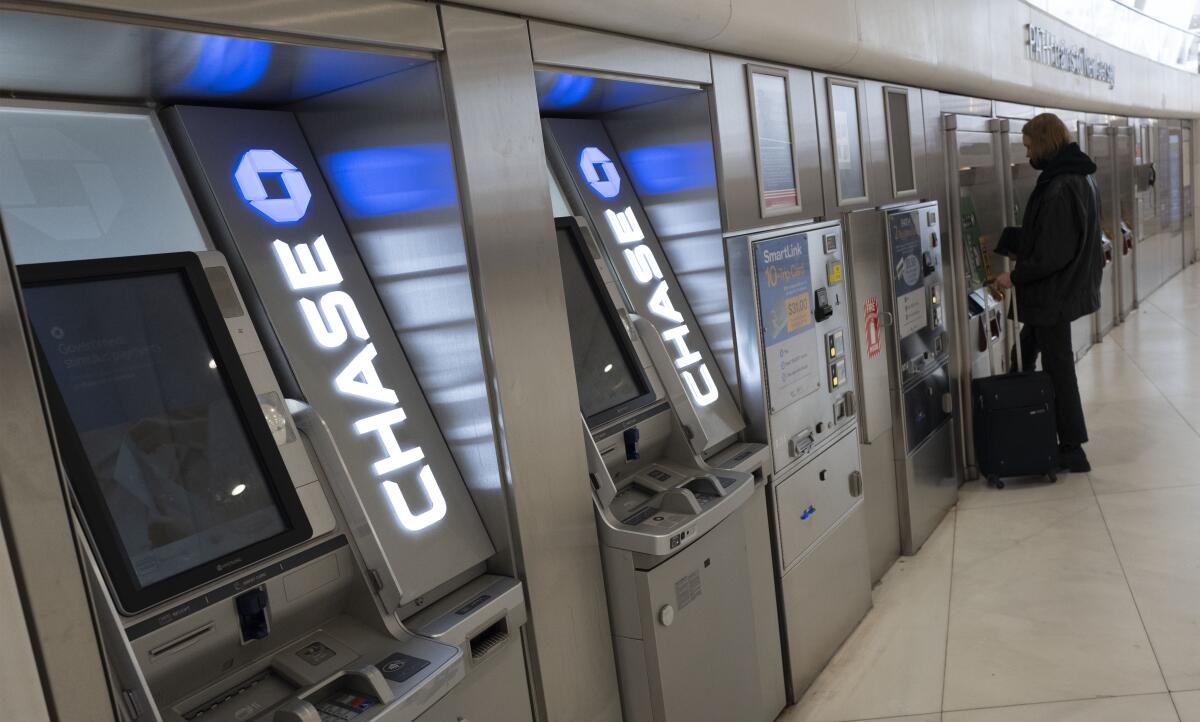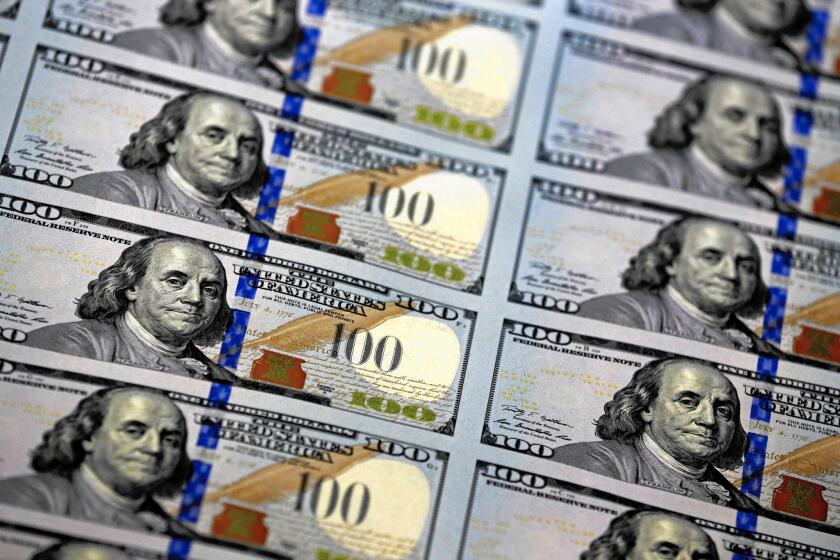Overdraft fees could drop to as low as $3 under Biden proposal

The cost for overdrawing a bank account could drop to as little as $3 under a proposal announced by the White House, the latest effort by the Biden administration to combat fees it says pose an unnecessary burden on American consumers, particularly those living paycheck to paycheck.
The proposed change by the Consumer Financial Protection Bureau could potentially eliminate billions of dollars in fee revenue for the nation’s biggest banks, which were gearing up for a battle even before Wednesday’s announcement. Exactly how much revenue depends on which version of the new regulation is adopted.
Banks charge a customer an overdraft fee if their bank account balance falls below zero. Overdraft started as a courtesy offered to some customers when paper checks used to take days to clear, but proliferated because of the growing popularity of debit cards. So, for instance, a $10 debit card transaction could cost a bank customer $40 if their balance goes below zero.
“For too long, some banks have charged exorbitant overdraft fees — sometimes $30 or more — that often hit the most vulnerable Americans the hardest, all while banks pad their bottom lines,” President Biden said in a statement. “Banks call it a service — I call it exploitation.”
Under the proposed rule, banks could charge customers only what it would cost them to break even on providing overdraft services. This would require banks to show the bureau the costs of running those services, a task few banks would want to handle.
Nearly 40% of the biggest U.S. banks surveyed order transactions in a way that leads to increased overdrafts, according to a report by the Pew Charitable Trusts.
Alternatively, banks could use a benchmark fee that would apply across all affected financial institutions. Regulators proposed several fees — $3, $6, $7 and $14 — and will gather industry and public input on the most appropriate amount. The bureau says it arrived at these figures by looking at how much it cost banks to recoup losses from accounts that went negative and were never paid back.
Banks could also provide small lines of credit to allow customers to overdraw, a service that would operate like a credit card. Some banks, such as Truist Bank, offer that type of service.
According to research conducted by Bankrate in August, the average overdraft fee was $26.61. Some banks charge as much as $39. The nation’s biggest banks still take in roughly $8 billion in overdraft fees every year, according to data from the Consumer Financial Protection Bureau and banks’ public records. The bureau’s research also shows overdraft fees overwhelmingly affect the poor and households of color, who often overdraw multiple times a year.
Biden has made the elimination of “junk fees” one of the cornerstones of his administration’s economic agenda heading into the 2024 election. Overdraft fees have been at the center of that campaign, and the White House directed government regulators last year to do whatever is in their power to further curtail the practice.
“We are proposing rules to close a long-standing loophole that allowed many large banks to transform overdraft into a massive junk fee harvesting machine,” Rohit Chopra, director of the Consumer Financial Protection Bureau, said in a statement to reporters.
The Biden administration has cracked down on ‘junk fees’ charged by banks, airlines and concert ticket sellers, but they’re not yet eliminated entirely.
The rules would apply only to banks with more than $10 billion in assets, which is roughly 175 banks that make up most of the financial institutions Americans do business with. The rules spare small banks and credit unions, some of which rely disproportionately on overdraft fees. Bureau officials told reporters that it chose to focus on the largest banks because most Americans bank at these large institutions and that is where the widespread abuses have historically happened. Roughly two-thirds of all overdraft fees are charged by these 175 banks.
Decades ago, banks created a service that allowed certain customers with checking accounts to go negative in their accounts to avoid bouncing paper checks. What started as a niche service became a massive profit center for the banks after the proliferation of debit cards that caused customers to debit their bank accounts for small and large amounts of money multiple times a day.
Overdraft fees have been a financial bonanza for the banking industry, with the Consumer Financial Protection Bureau estimating that banks collected $280 billion in overdraft fees in the last 20 years. These fees became so popular that one bank chief executive named his boat the Overdraft.
But banks have changed their overdraft practices in response to political and popular pressure in the last few years, and question the need for regulators to step in now. Most of the biggest banks have added safeguards to customers’ accounts to allow them to bring the balance back into positive territory before they incur a fee. Bank of America, once considered by industry critics to be the biggest abuser of overdraft fees, cut its fee from $35 to $10 two years ago and says revenue from overdraft fees is now less than 10% of what it had been.
JPMorgan, the nation’s largest bank, now gives customers a $50 cushion when they go negative in their account. CEO Jamie Dimon told lawmakers in 2022 that with changes the bank has made, roughly 70% of all transactions that cause a negative balance do not incur overdraft fees.
The banking industry has been preparing for the proposal for months and is expected to fight the new regulations vigorously. The regulations are likely to end up in a protracted legal battle that could reach the Supreme Court. If the rule is adopted and survives political and legal challenges, the new regulations would go into effect in the autumn of 2025.
Bank fees have gotten way out of hand — so much so that they now account for more than a third of revenue for an industry that once made its cash almost exclusively by lending money to customers.
Banks have long contended that government regulations on overdraft could cause them to eliminate the service altogether. Although some banks have eliminated overdraft fees and created accounts that cannot go negative, Bankrate estimates that roughly 9 out of 10 banks still offer the service.
“If enacted, this proposal could deprive millions of Americans of a deeply valued emergency safety net while simultaneously pushing more consumers out of the banking system,” said Lindsey Johnson, president and CEO of the Consumer Bankers Assn., the trade and lobby organization for the larger consumer banks.
More to Read
Inside the business of entertainment
The Wide Shot brings you news, analysis and insights on everything from streaming wars to production — and what it all means for the future.
You may occasionally receive promotional content from the Los Angeles Times.












